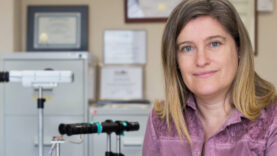The telemedicine leverages advances in telecommunications and new digital tools to provide remote healthcare. According to the World Health Organisation (WHO), telemedicine can help achieve universal health coverage, through systems that ensure access to health services from anywhere. For the WHO, telemedicine could especially help the most vulnerable patients: those living far from hospitals and health centres as well as elderly and vulnerable patients.
First, telemedicine provides patients with a secure ecosystem for communicating with healthcare professionals. Like other digital communication tools, telemedicine makes it possible to adapt healthcare to the different schedules of doctors and patients, facilitating interactions between the two. In addition to saving time and reducing the number of visits to medical centres, telemedicine can speed up simple procedures such as requesting prescriptions, consulting results and arranging appointments, among other things.
During the COVID-19 pandemic, telemedicine has experienced unprecedented growth. Through remote patient-physician interactions, telemedicine reduces the risk of disease transmission and allows other key clinical services (surgeries, chronic disease treatments, emergencies) to continue to function without interruption.
Thanks to advances in information technology, telemedicine also allows for consultations with healthcare professionals through systems such as videoconferencing. For many doctors, these tools are a major breakthrough, allowing them to see what the patient looks like from a distance. In this respect, large companies are moving fast. By the end of 2020, Movistar presented its telecare services, which allow for video consultations, prescriptions and immediate medical assistance.
Telecare during the pandemic
Telecare has also soared in public health care during the pandemic. Family doctors have been overwhelmed with an average of 42 patients per day, 32% more than in previous years, of which almost three quarters opted for telemedicine consultations. Public sector healthcare professionals are calling for greater investment in telemedicine and telecare tools, as well as the design of a national development plan. In statements to El PaísAmparo Naranjo, a family doctor, stresses the need for systems that allow video-call communication and the implementation of secure communication channels that allow, among other things, the sending of photographs and medical documents.
Telemedicine not only offers benefits to patients. Health professionals can also take advantage of new technologies to speed up diagnosis, avoid unnecessary tests and improve primary care. In some countries, telemedicine programmes have been developed to connect family doctors with other specialists. Through these platforms, consultation notes, medical records, test results, images and other relevant data can be shared. Some studies suggest that these new avenues of communication can reduce the number of patients referred to speciality centres and hospitals, while providing a new continuing education solution for GPs. For example, in the UK, the GP federation GPCare set up such a system and, since 2012, has recorded a decrease in specialist referrals of 63%.
In this sense, digital tools can also improve patients' hospital stays. Telemedicine facilitates remote patient monitoring, which could speed up decision-making. This alternative model would allow healthcare professionals to review cases and select those that require face-to-face care to free up resources and reduce the workload of professionals. Several studies suggest that, in addition to reducing overcrowding in medical centres, telemedicine can reduce mortality in intensive care units (from 13.6 to 11.8%) and the average length of stay in hospital (from 6.4 to 4.5 days).
Artificial intelligence
Advances in machine learning and artificial intelligence also have great advantages for telemedicine. Firstly, because these tools can learn to diagnose diseases from databases and articles published in scientific journals. Studies that have analysed the potential of these technologies offer very encouraging results. In some cases, artificial intelligence detects diseases from images better than health professionals and, similarly, algorithms also outperform people when it comes to ruling out ailments and selecting healthy patients.
By the end of 2020, the U.S. Food and Drug Administration. (FDA) had 64 technologies approved for use in medicine and medical devices based on machine learning algorithms and artificial intelligence. The vast majority (47%) are designed to improve diagnosis in radiology and other imaging techniques, but more and more software is being developed to speed up routine consultations and monitoring.
The rapid growth of these technologies has led the FDA to announce an action plan on the subject, published in January 2021. This document includes the creation of a tailor-made regulatory framework, the development of a decalogue of best practices and a transparency plan to ensure that information is always stored securely and in a way that respects patients.
Artificial intelligence is also part of many telemedicine services, especially in symptom pre-assessment and diagnosis processes. Thus, users can answer different questions from a website or mobile app and the algorithm then provides relevant information about possible diagnoses and informs about next steps, such as a treatment or a doctor's visit.







